
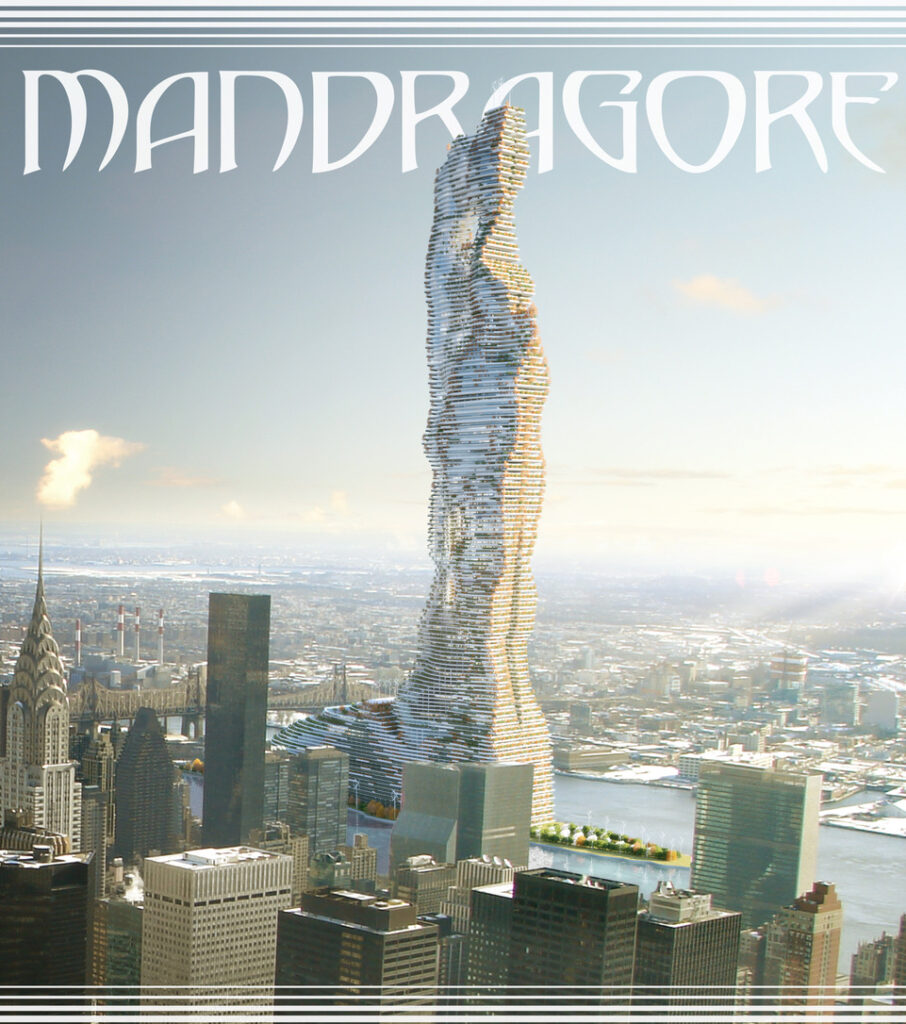
Mandragore is a proposal to add substance to carbon neutral architecture. Like its namesake the mystical mandrake plant it takes our imagination to new realms, where fresh dimensions wait for us to explore. And explore them we must for the sake of all our futures.
However, New Yorkers are unlikely to accept a 2,418 foot-tall tower on their beloved Roosevelt Island, and lose a precious piece of parkland in return. But that matters not. What matters is that Mandragore is a beacon on the road that human architecture must follow.
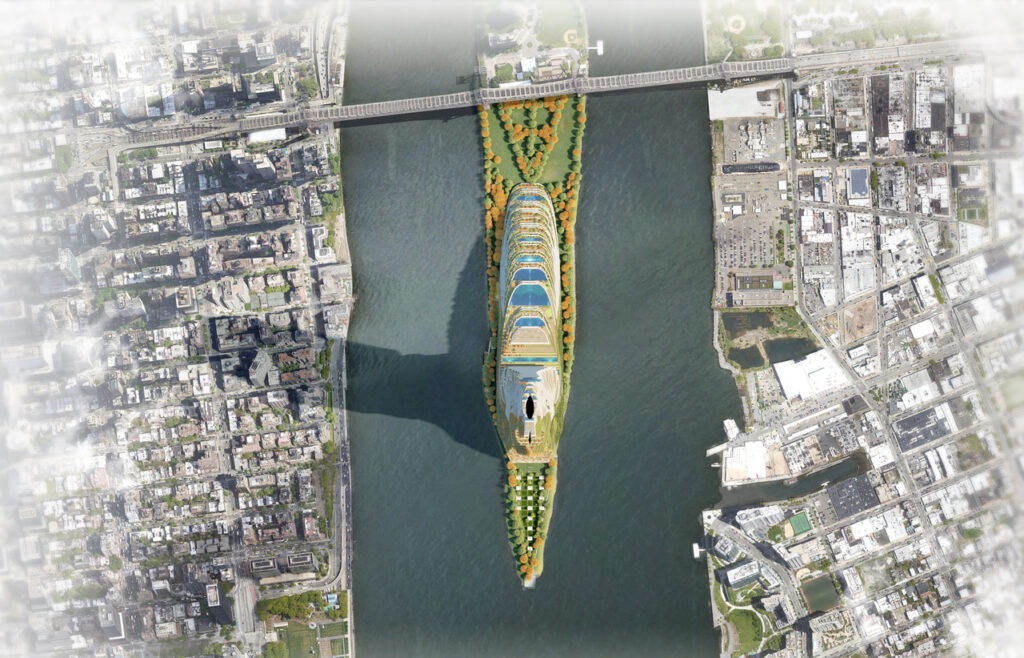
Not only is it designed to be the tallest tower in the world, Mandragore also ambitiously aims to becarbon negative—meaning it will eat up more carbon than it produces.
The project is a response to the ‘city of tomorrow’, a city that will consider its carbon footprint and achieve carbon neutrality by 2050.
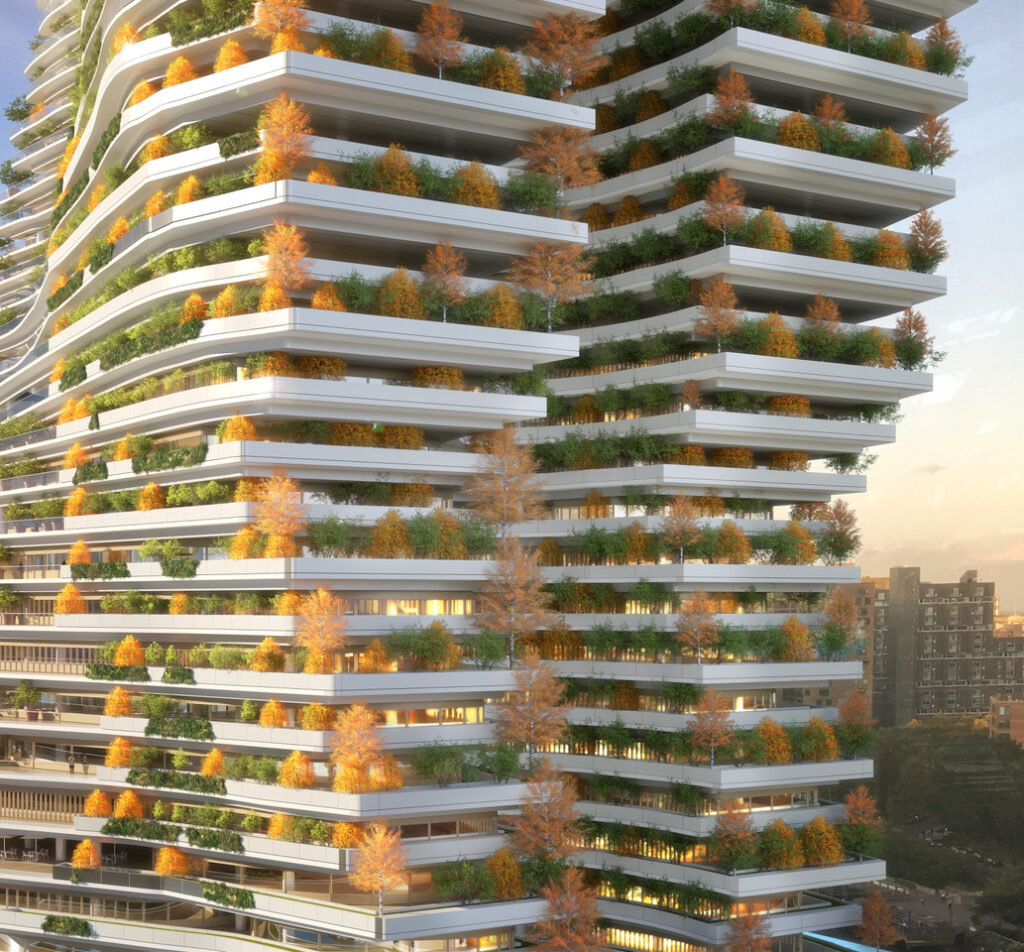
Conventional buildings create carbon emissions that trap their heat in the atmosphere. It’s a vicious energy circle that Mandragore wants to break. But this is not the product of a fevered imagination. The bits are already there. Mandragore simply puts them together in a form we can engage with, and understand.
This project thinks outside the box of sustainable architecture. Besides achieving the technical or quantifiable goals related to carbon and energy usage, the project also executes a concept called “energy sobriety,” which calls for a shift in lifestyle choices resulting in a smaller carbon footprint
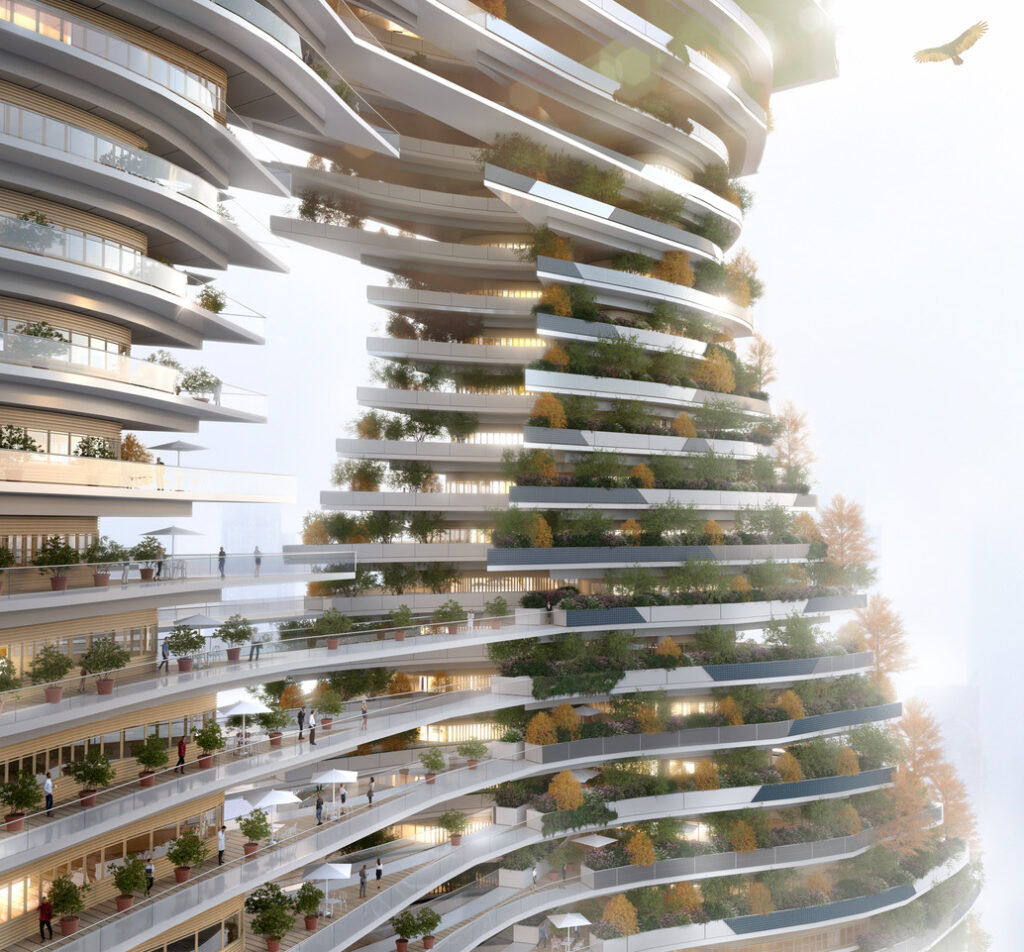
The sinuous structure with many curves and turns would absorb more CO2 than it creates, by becoming a carbon sink. It would warm and cool itself through a network of passive underground pipes, enabling air-ground thermal exchanges. While a cladding of living plants would convert CO2 in the air above New York to oxygen.
Humankind’s obsession with technology has taken us on an energy shopping spree, leading us in a direction perhaps even threatening our extinction. Mandragore could be a living expression of energy sobriety, which appears to be the only way to survive. We simply must reduce our overall consumption. Does it matter if our buildings have a different appearance?
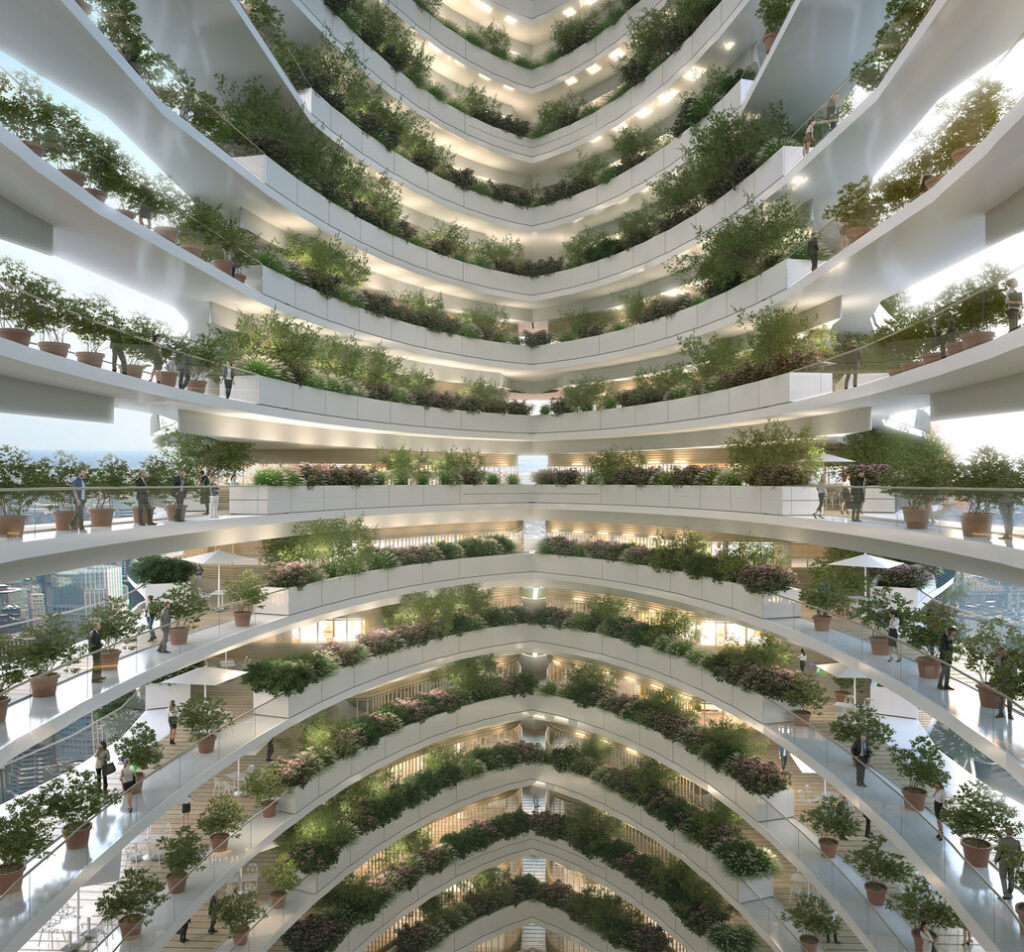
Commuting to and from work generates CO2, while we waste precious time on subways tapping mindlessly on phones. Mandragore wants to give us that time back, by including home work space in every apartment. COVID has given us fresh eyes on an alternative way of working and living: a live-work lifestyle through which we have more time to explore our potential.
The network of underground pipes would be the soul of energy sobriety if French architects Rescubika achieve their dream. The geothermal well system would take advantage of temperature differentials just below earth’s surface. This is warmer than the air above in winter and correspondingly cooler in summer.
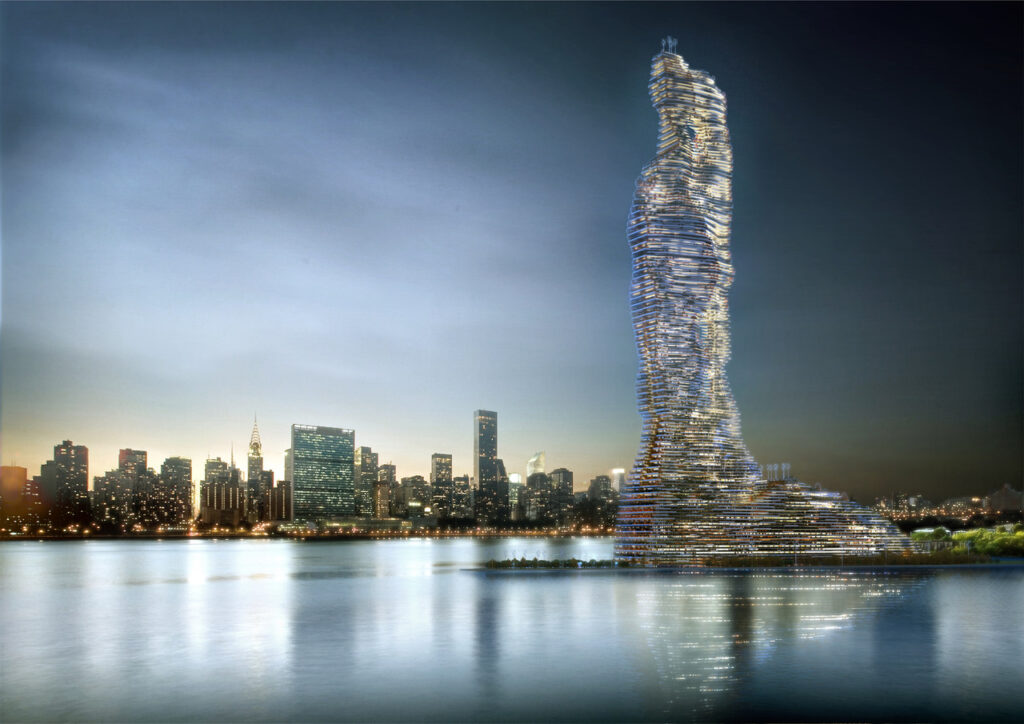
Hence the temperature of the air pumped through the pipes would fall in summer, but rise in winter. This would consume energy which must come from somewhere, but Mandragore has that problem nailed too.
Its response is a green tick for 36 wind turbines, 8,300 shrubs, 1,600 trees, 83,000 square feet of plant walls, and nearly 23,000 square feet of solar panels. And it adds extensive use of timber, in which existing carbon will be trapped for the lifetime of the immense structure of 160 floors.
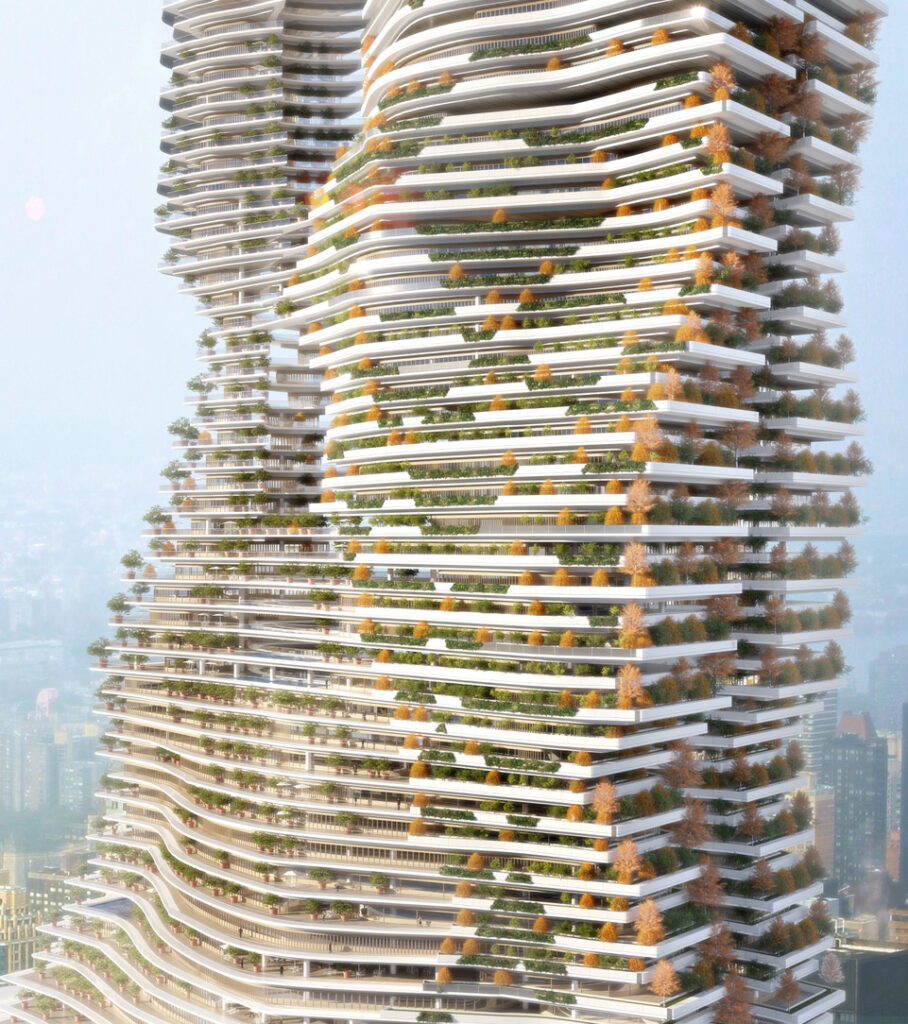
Seen from above, Mandragore has the appearance of a ship setting sail. It looks so tiny against the backdrop of the city, it’s hard to imagine thousands of people living and working there. But how important is this news item really in the context of the pandemic. Why should we care about a building that will probably never be built?
We should care because it shows us what we could do with green technology. Its shape is out of the box which attracts our attention, despite the polemic of the pandemic. If it draws our attention to the greater goal of a carbon-neutral world by 2050, then it achieves the goal of becoming a beacon of hope.
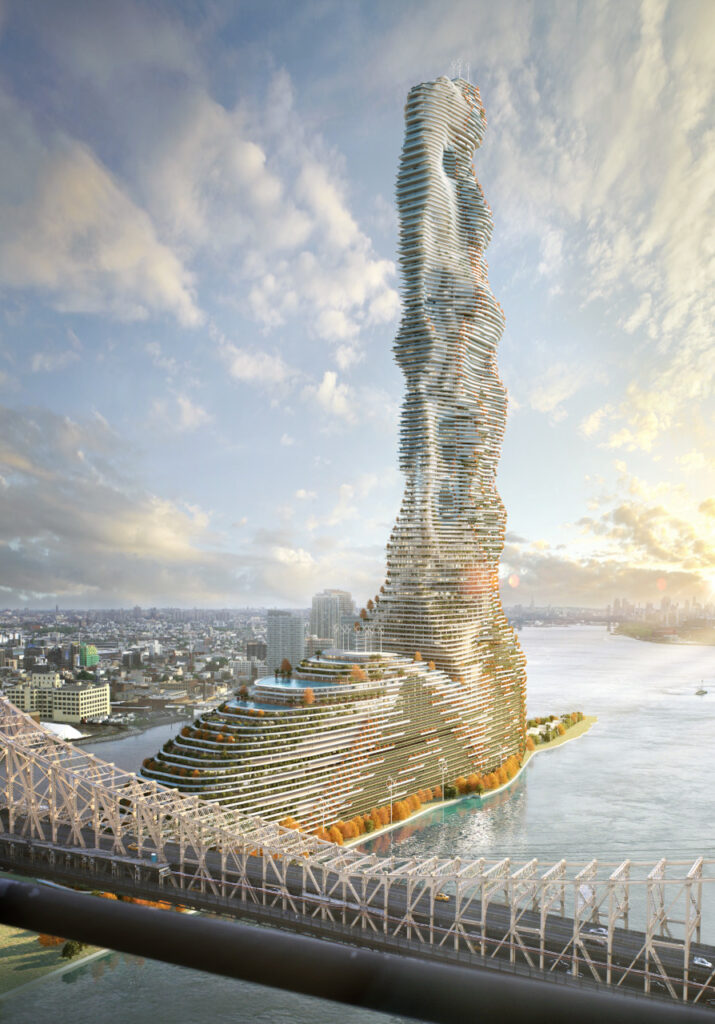
Its second message is we need to break free from architectural convention, if our craft is to remain meaningful in the emerging era. Form must follow function, and if function dictates a sinuous structure so be it. Even if they never build it, Mandragore will inspire others to reach for the sky.
For more information on Mandragore visit www.rescubika.com